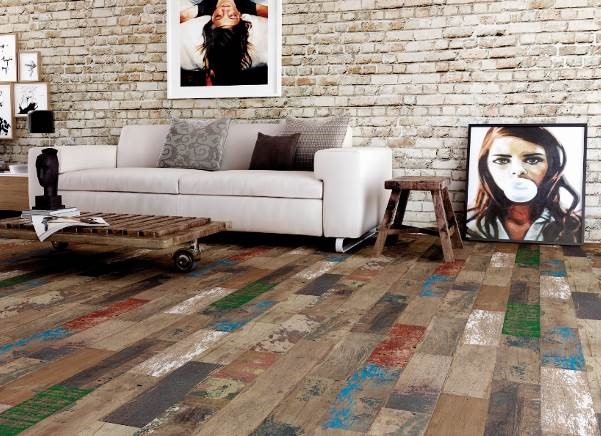Last week Artful Kitchens hit the road again for a mini-trip to my hometown, Miami. I was excited to re-connect with some of the great people I met earlier this year on my visit to the Cevisama tradeshow (if you missed that, you can read about it here) with Tile of Spain. I was not disappointed!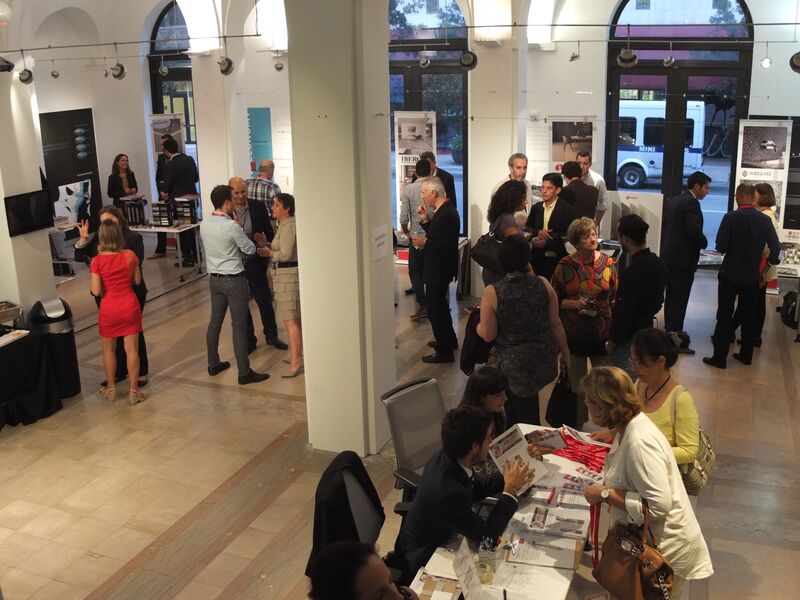 Ceramic Solutions-Innovations Pushing Boundaries of Design was held at the Miami Center for Architecture & Design, presented by Tile of Spain. Several of the big Spanish tile companies were also on hand showing their wares and I'm happy to report that their innovative products are readily available to us here in South Florida and other parts of the US.
Ceramic Solutions-Innovations Pushing Boundaries of Design was held at the Miami Center for Architecture & Design, presented by Tile of Spain. Several of the big Spanish tile companies were also on hand showing their wares and I'm happy to report that their innovative products are readily available to us here in South Florida and other parts of the US.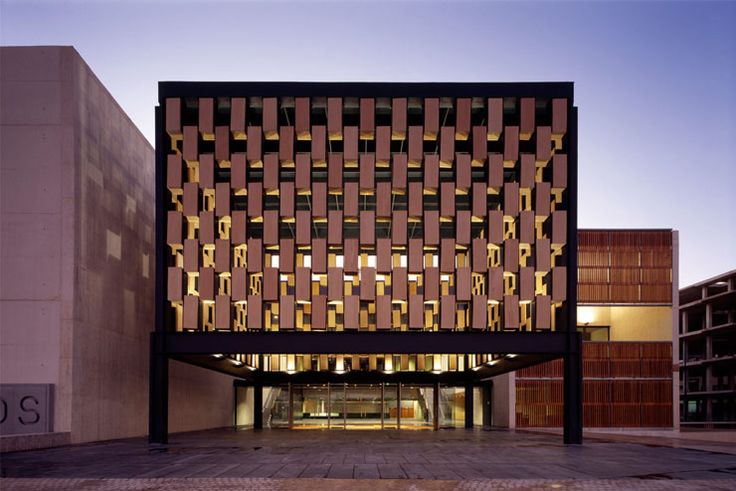 The big "takeaway" of the evening, besides seeing my peeps, was hearing Dr. Martin Bechthold, Professor, Harvard GSD, talk tile from a historical and architectural point of view. Clay has been used in the arts since ancient times and ceramic tile has a long history as a covering, or finish material. Now new technologies are utilizing ceramic tile architecturally and structurally!
The big "takeaway" of the evening, besides seeing my peeps, was hearing Dr. Martin Bechthold, Professor, Harvard GSD, talk tile from a historical and architectural point of view. Clay has been used in the arts since ancient times and ceramic tile has a long history as a covering, or finish material. Now new technologies are utilizing ceramic tile architecturally and structurally!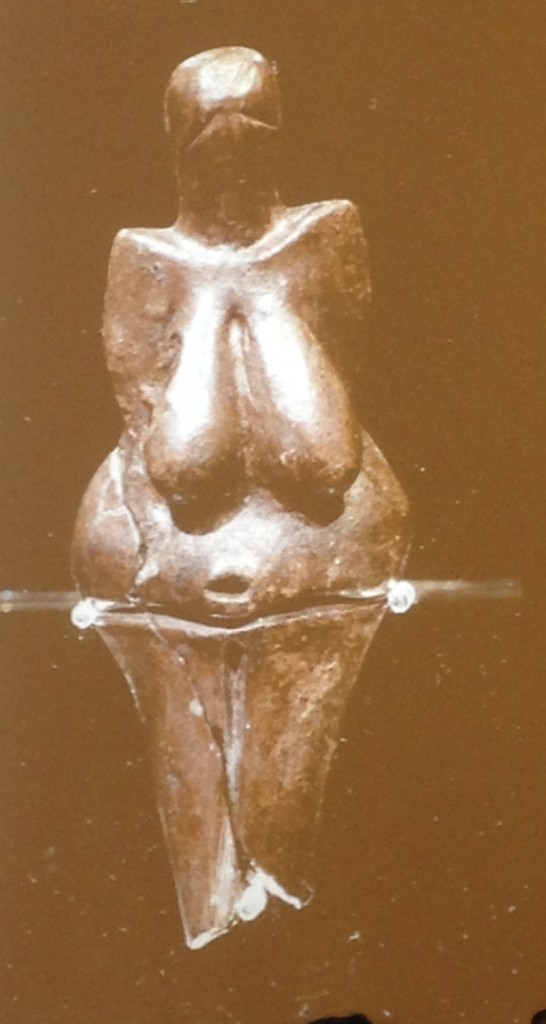 Next up was Tile of Spain Consultant Ryan Fasan who gave us an overview of the latest tile trends along with solid knowledge that is so useful in helping me to educate clients on the best products.
Next up was Tile of Spain Consultant Ryan Fasan who gave us an overview of the latest tile trends along with solid knowledge that is so useful in helping me to educate clients on the best products. 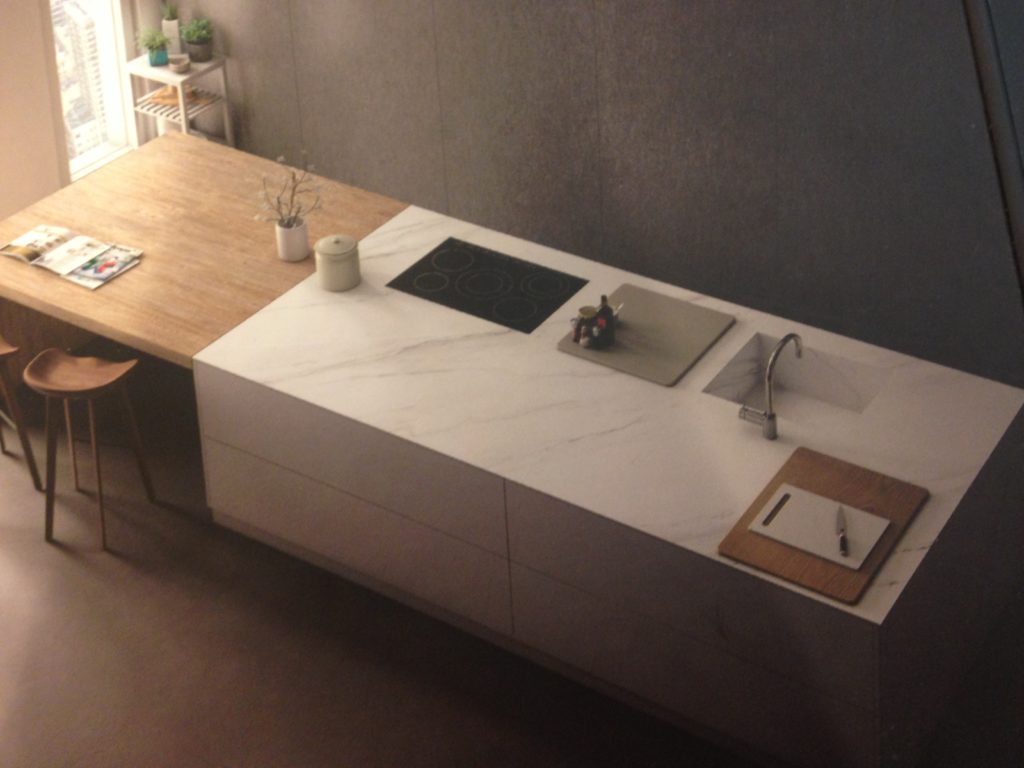 The sleek thin look of large format porcelain for counter tops is a current favorite of mine. Can you blame me? Consider it as an option if you're looking for a contemporary Euro vibe in your kitchen.
The sleek thin look of large format porcelain for counter tops is a current favorite of mine. Can you blame me? Consider it as an option if you're looking for a contemporary Euro vibe in your kitchen.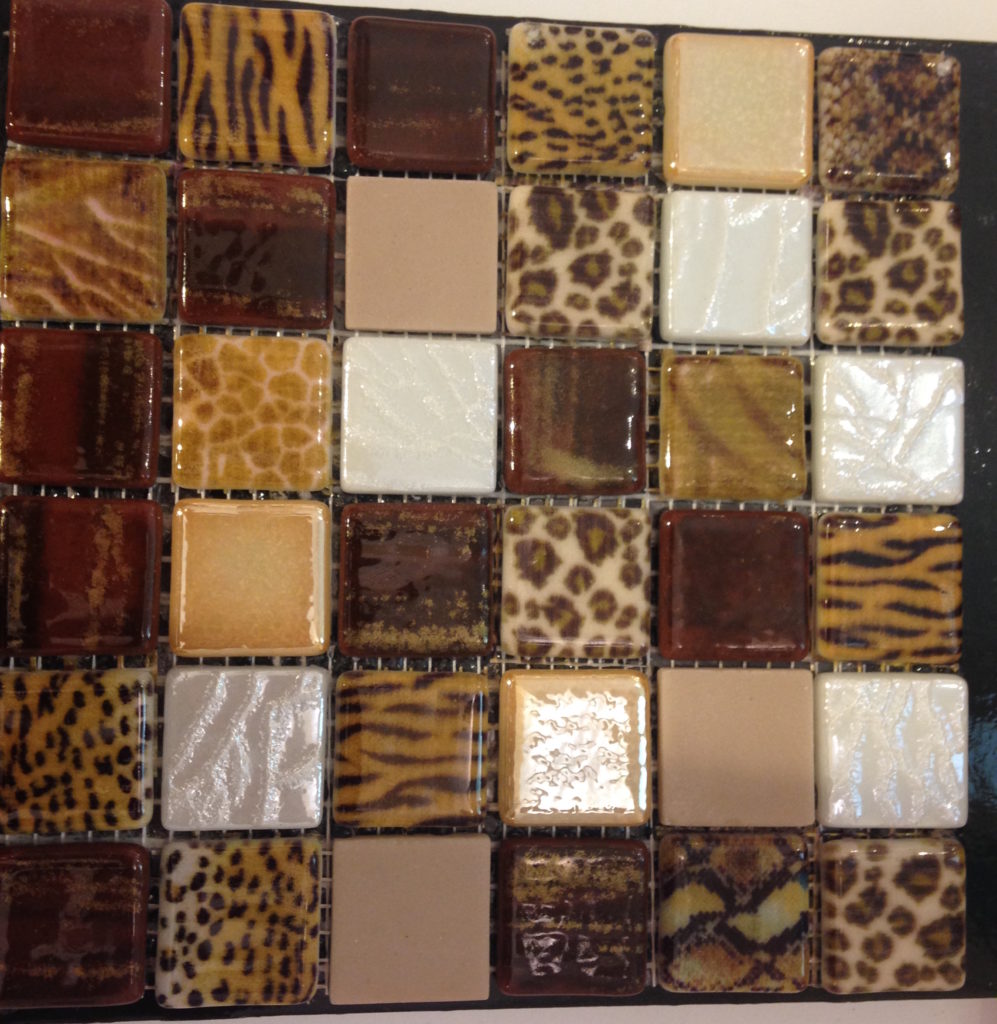 Breakthroughs in digital ink jet printing on tile allow for infinite possibilities. Tile can also be used to cool or heat your home due to their thermo dynamic properties.
Breakthroughs in digital ink jet printing on tile allow for infinite possibilities. Tile can also be used to cool or heat your home due to their thermo dynamic properties.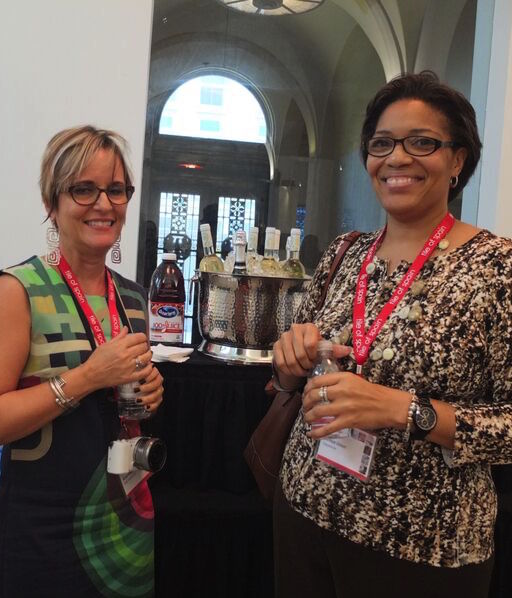 It's just like Tile of Spain to round out the experience with a literal taste of Spain! We enjoyed tapas, a traditional paella and Spanish wine.
It's just like Tile of Spain to round out the experience with a literal taste of Spain! We enjoyed tapas, a traditional paella and Spanish wine.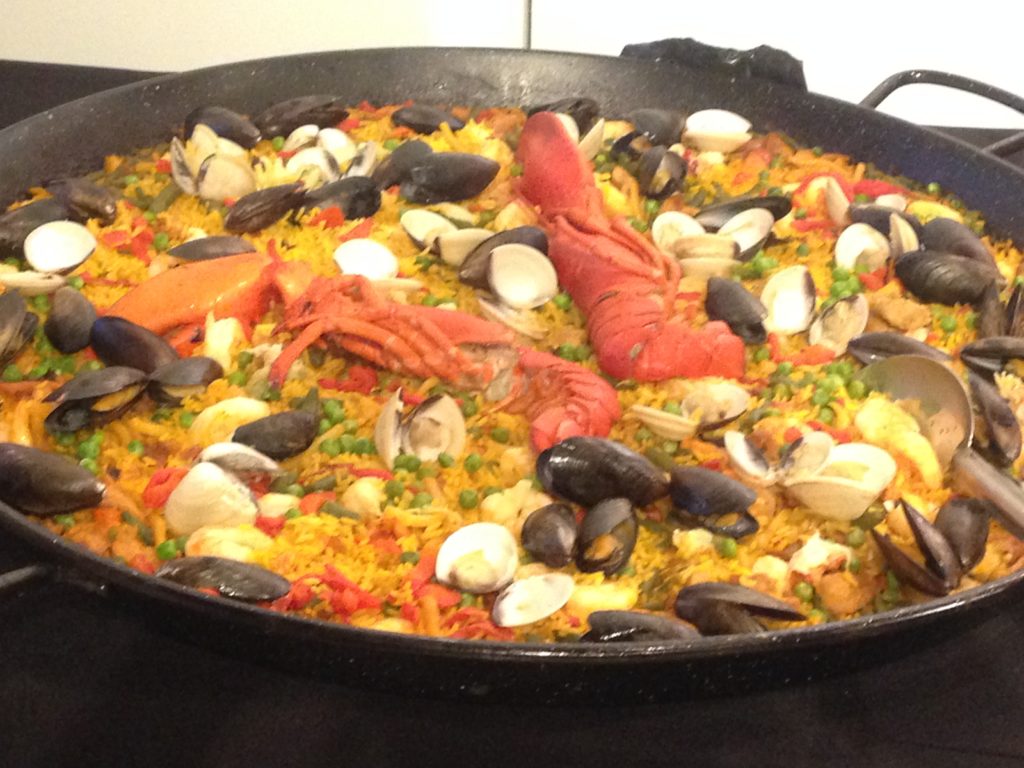 Tile of Spain is the international brand representing 125 ceramic tile manufacturers belonging to the Spanish Ceramic Tile Manufacturer's Association (ASCER).
Tile of Spain is the international brand representing 125 ceramic tile manufacturers belonging to the Spanish Ceramic Tile Manufacturer's Association (ASCER).
Tile Tuesday: The Many Meanings of "Encaustic"
What is encaustic painting?As an artist, I love the sensuousness of working in the encaustic medium which I discovered in 2008. Encaustic painting involves beeswax, resin and pigments in varying combinations. They are mixed together and applied to a panel in layers which are fused with a torch or heat gun. This is where the name comes from. The Greek work “encaustikos” means to heat or burn.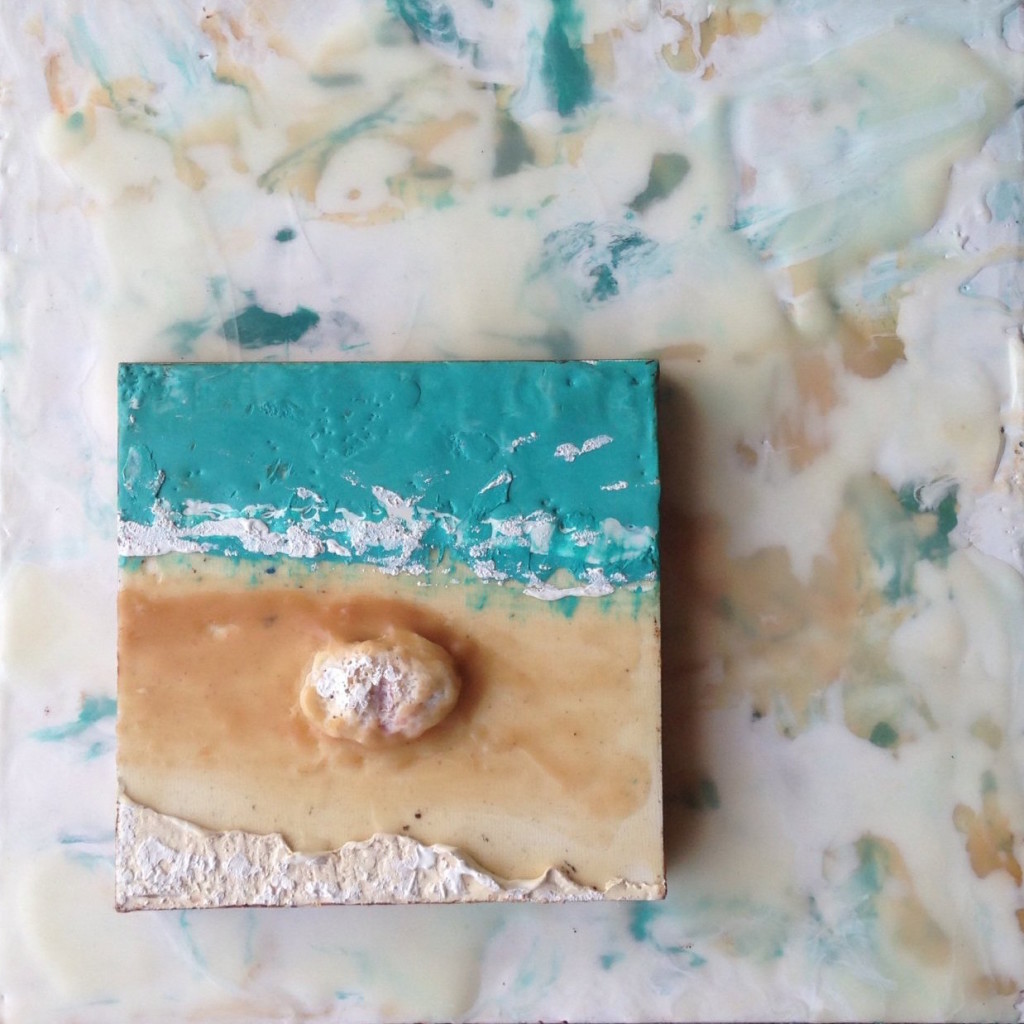 Encaustic painting predates oil painting and was used to create portraits on mummy casings dating back to 100BC in Egypt. These paintings are known as the "Fayum" portraits. Many have survived because beeswax is extremely stable so the pigments do not fade over time.
Encaustic painting predates oil painting and was used to create portraits on mummy casings dating back to 100BC in Egypt. These paintings are known as the "Fayum" portraits. Many have survived because beeswax is extremely stable so the pigments do not fade over time.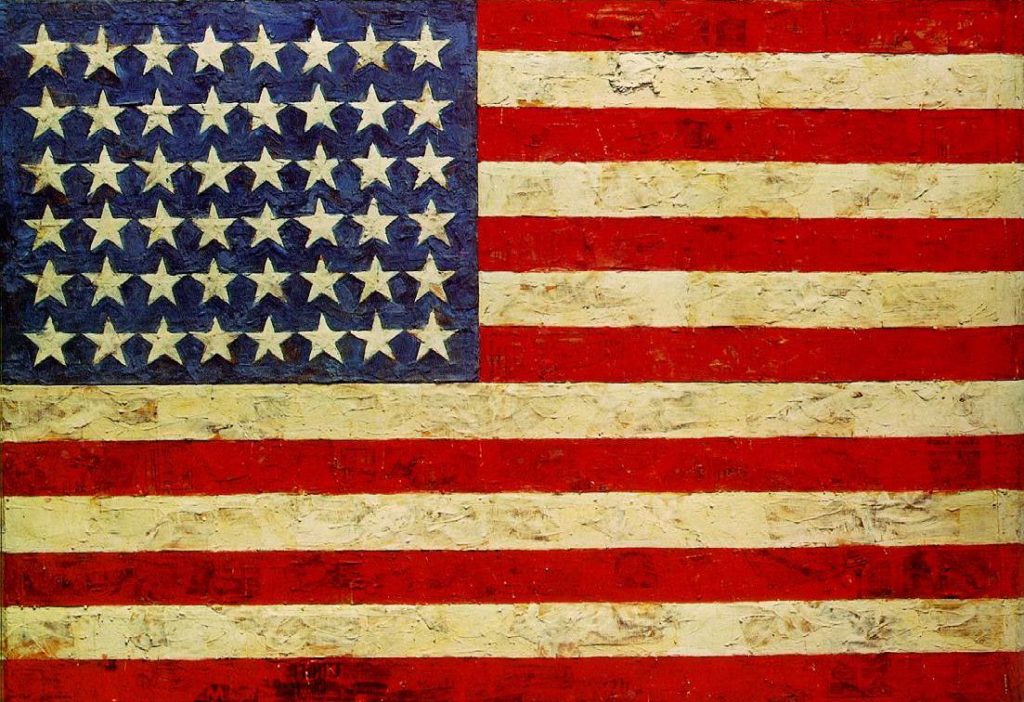 The technique fell into obscurity but was resurrected in the 1950s by artist Jasper Johns. You remember this painting, no? It’s an encaustic painting! Fast forward to the twenty first century and you will find more and more artists working with wax and incorporating it into their repetoire.
The technique fell into obscurity but was resurrected in the 1950s by artist Jasper Johns. You remember this painting, no? It’s an encaustic painting! Fast forward to the twenty first century and you will find more and more artists working with wax and incorporating it into their repetoire. 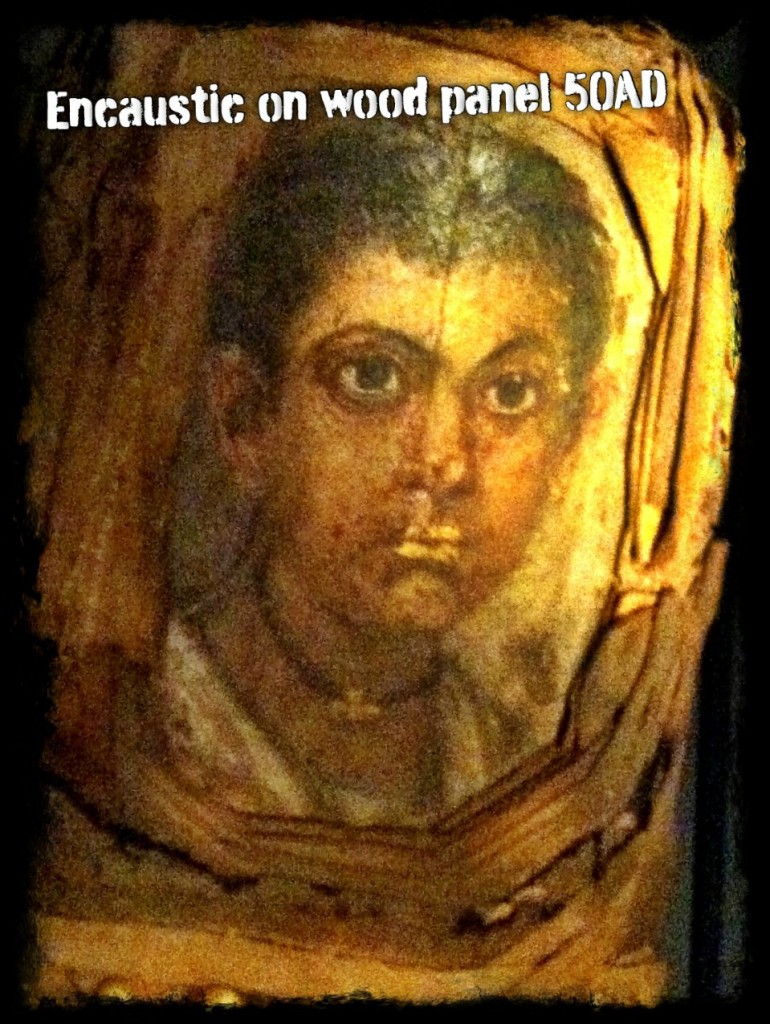 The Name GameIn the pursuit of all things tile, while on my trip to the Cevisama tile trade show with Tile Of Spain, I discovered something called “encaustic tile”. No one could actually tell me how it was connected to what I knew to be encaustic art so I decided to find out.
The Name GameIn the pursuit of all things tile, while on my trip to the Cevisama tile trade show with Tile Of Spain, I discovered something called “encaustic tile”. No one could actually tell me how it was connected to what I knew to be encaustic art so I decided to find out. 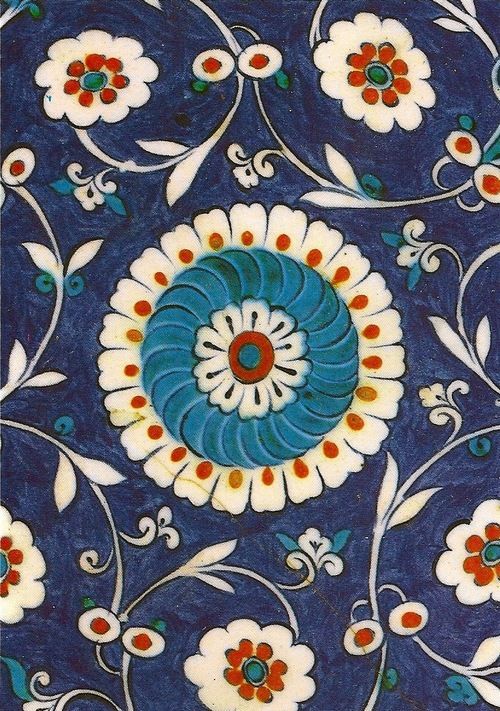 Guess what? There is no connection. Here’s what I discovered:Encaustic tile is also referred to as cement tile, inlaid tile and hydraulic tile. The name“encaustic” with reference to tile, comes from the nineteenth century. Turns out there is a third type of encaustic! It is also the name of a process of medieval enameling involving wax. Victorians thought that inlaid tile resembled this enamel work and began to refer to it as encaustic. The intricate patterns and designs of encaustic tile mimic the encaustic enameling process. It is a total misnomer but the name “Encaustic tile” stuck.
Guess what? There is no connection. Here’s what I discovered:Encaustic tile is also referred to as cement tile, inlaid tile and hydraulic tile. The name“encaustic” with reference to tile, comes from the nineteenth century. Turns out there is a third type of encaustic! It is also the name of a process of medieval enameling involving wax. Victorians thought that inlaid tile resembled this enamel work and began to refer to it as encaustic. The intricate patterns and designs of encaustic tile mimic the encaustic enameling process. It is a total misnomer but the name “Encaustic tile” stuck. 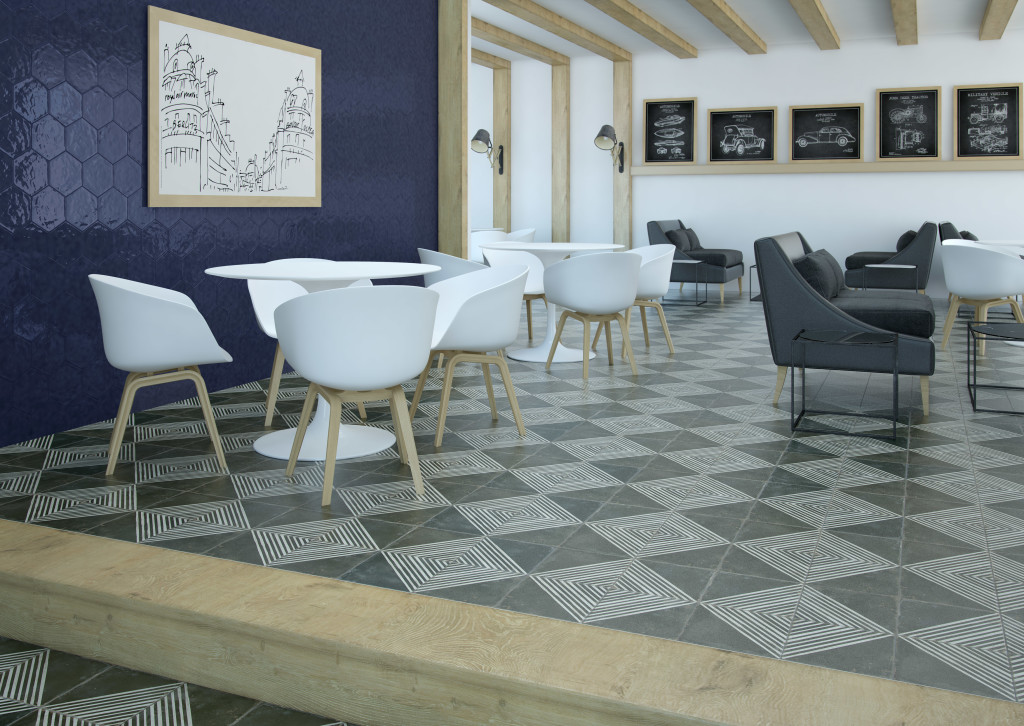 So what is encaustic tile?Cement tiles are not fired; there is no glaze layer on the surface of the tile. They derive their durability from the combination of finely dehydrated ground Portland cement layer and a more coarse layer of sand and cement. The pigment layer is hydraulically pressed into the surface and becomes a part of the tile. This merging of two layers creates the typically crisp clean patterns.
So what is encaustic tile?Cement tiles are not fired; there is no glaze layer on the surface of the tile. They derive their durability from the combination of finely dehydrated ground Portland cement layer and a more coarse layer of sand and cement. The pigment layer is hydraulically pressed into the surface and becomes a part of the tile. This merging of two layers creates the typically crisp clean patterns.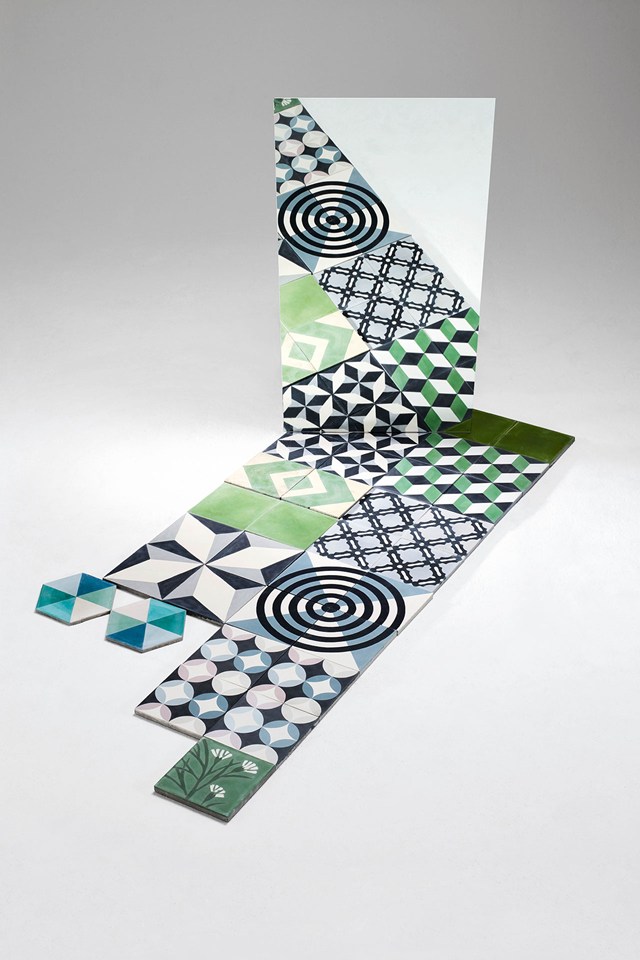 Originally these tiles were handmade but naturally today they are mass produced as described above. Encaustic, or cement tiles are known for their durability as floor tile and have lasted centuries. This explanation only scratches the surface as each country town and village in Italy, Spain, Mexico, Turkey etc. has its own history with the technique.
Originally these tiles were handmade but naturally today they are mass produced as described above. Encaustic, or cement tiles are known for their durability as floor tile and have lasted centuries. This explanation only scratches the surface as each country town and village in Italy, Spain, Mexico, Turkey etc. has its own history with the technique.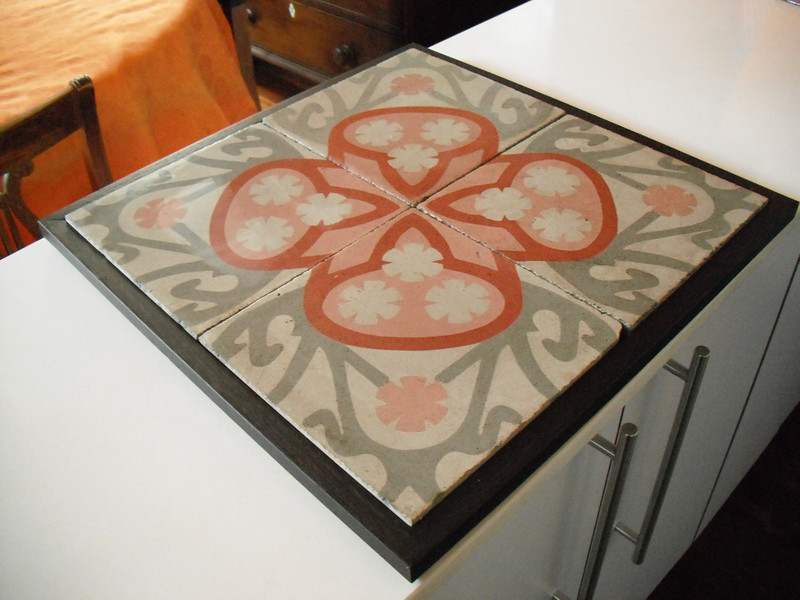 In my research I also came across the work of Benedicte Bodard. She lives in Barcelona where she salvages cement tile from dumpsters. With a little TLC ,she recreates them into furniture, wall hangings and more.So there you have it. If you have more info or would like to continue the conversation, email me or come by and visit on FaceBook.-------------------------------------------------------------------------------------------------------Update: Since posting this on Tuesday I have heard from designer Lundy Wilder of Villa Lagoon Tile. Not only is she an expert on cement tile, she even has a blog devoted to it! Here's what she had to add to the conversation: "Today's cement tiles are indeed still hand made all over the world. Ours are made in the Caribbean, Morocco, Vietnam, and Mexico. We have been to the factories (workshops is more fitting word) and know the owners well, all our cement tiles are made by hand.
In my research I also came across the work of Benedicte Bodard. She lives in Barcelona where she salvages cement tile from dumpsters. With a little TLC ,she recreates them into furniture, wall hangings and more.So there you have it. If you have more info or would like to continue the conversation, email me or come by and visit on FaceBook.-------------------------------------------------------------------------------------------------------Update: Since posting this on Tuesday I have heard from designer Lundy Wilder of Villa Lagoon Tile. Not only is she an expert on cement tile, she even has a blog devoted to it! Here's what she had to add to the conversation: "Today's cement tiles are indeed still hand made all over the world. Ours are made in the Caribbean, Morocco, Vietnam, and Mexico. We have been to the factories (workshops is more fitting word) and know the owners well, all our cement tiles are made by hand.
Everything You Wanted to Know About Tile: An Interview with Ryan Fasan
Before we get too crazy with the art here (I'm so sure we will!) I wanted to share some solid info about tile from the man who knows it best, Ryan Fasan. I had the pleasure of meeting "THE tile man" on my recent trip to the trade show Cevisama with Tile of Spain. Ryan is a professional consultant for all things tile related and also spoke this past week at the trade show Coverings in Orlando. Explaining and sharing his vision and understanding of ceramic tile is what he does best and he has graciously agreed to dish his knowledge here with us at Artful Kitchens. Take it away, Ryan! (For your viewing pleasure I am including some photos from some of the Spanish tile brands seen at Cevisama15)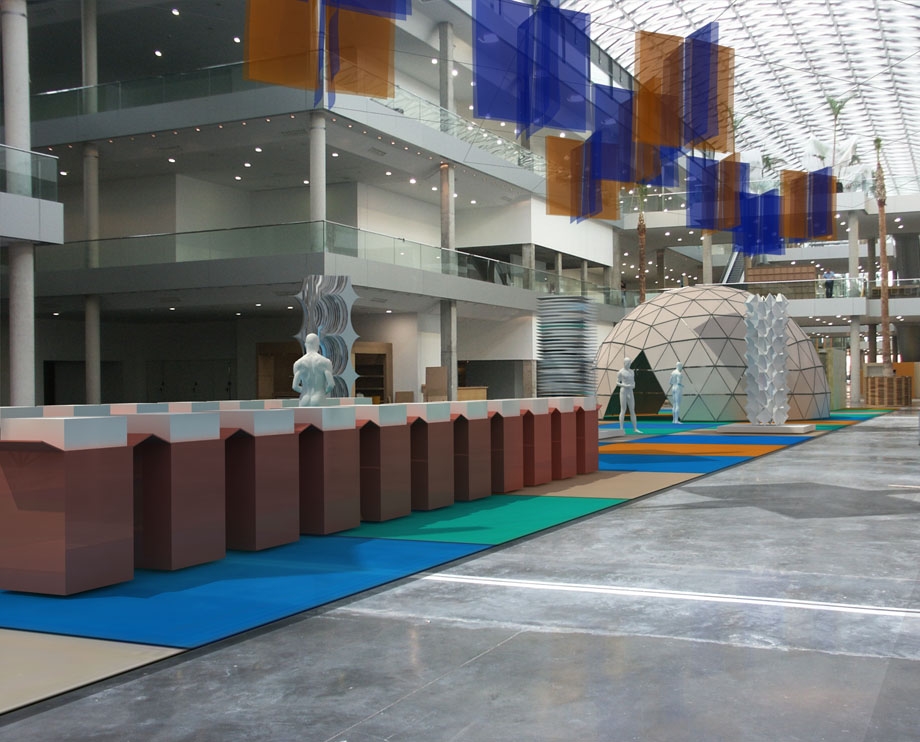 AK: What’s the difference between porcelain and ceramic tile? Ryan: Porcelain (who’s technical term is impervious tile) is a classification of ceramic tile. There are four types of tile, each classified by its water absorption capabilities. Impervious or porcelain tile happens to be the densest with a porosity of 0.5% or less. It is important to note that densest does not mean “best” in every application. The industry makes four types of tile for a reason and each type has an optimal area of use. When selected and installed properly any type of tile can last for decades if not centuries.AK: Is it true that porcelain tile is the same color all the way through?Ryan: Well there is "through-body" porcelain and colored body porcelain which is probably what you're referring to. Through-body is a heavy duty commercial product that is unglazed and extremely durable with very low water absorpbtion, usually around 0.01%In residential design you're more likely to encounter colored body porcelain which has some type of glaze. The body of the tile is then colored to match the glaze but the wear layer is still just in the glaze, so no, it's not "the same" all the way through.
AK: What’s the difference between porcelain and ceramic tile? Ryan: Porcelain (who’s technical term is impervious tile) is a classification of ceramic tile. There are four types of tile, each classified by its water absorption capabilities. Impervious or porcelain tile happens to be the densest with a porosity of 0.5% or less. It is important to note that densest does not mean “best” in every application. The industry makes four types of tile for a reason and each type has an optimal area of use. When selected and installed properly any type of tile can last for decades if not centuries.AK: Is it true that porcelain tile is the same color all the way through?Ryan: Well there is "through-body" porcelain and colored body porcelain which is probably what you're referring to. Through-body is a heavy duty commercial product that is unglazed and extremely durable with very low water absorpbtion, usually around 0.01%In residential design you're more likely to encounter colored body porcelain which has some type of glaze. The body of the tile is then colored to match the glaze but the wear layer is still just in the glaze, so no, it's not "the same" all the way through.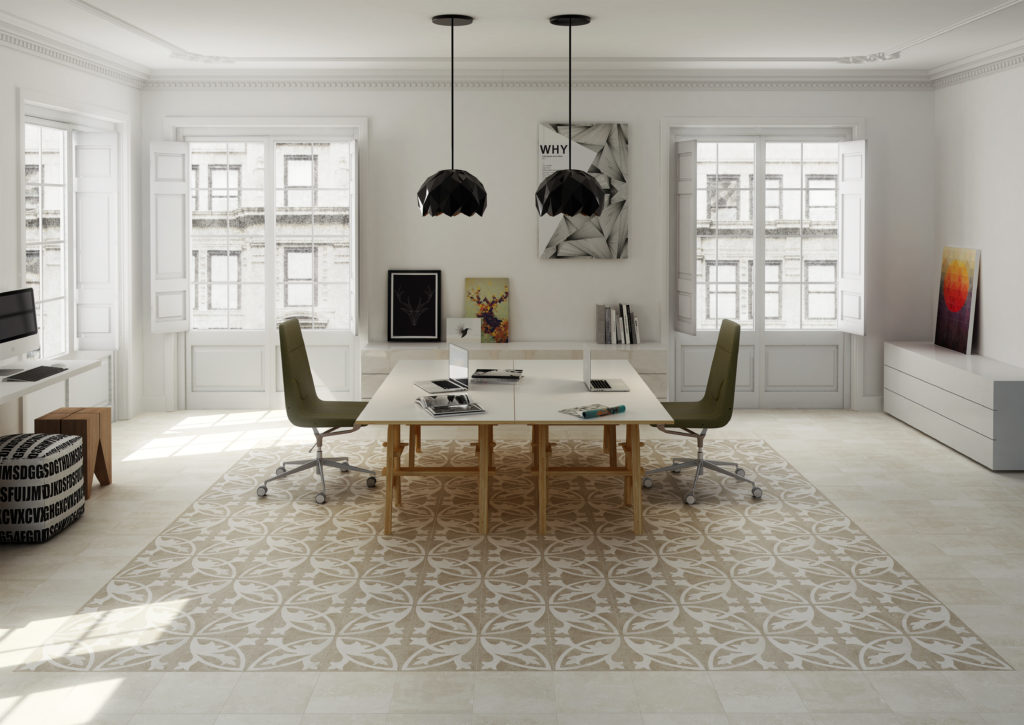 AK: Do I have to use grout?Ryan: Even though this is often the wording used, the real question is do I have to leave a joint or can I just put the tile tightly together (called a butt-joint)? The answer is yes, you do have to have a joint. Our buildings are not as solid or perfect as we often think they are. Joints allow for natural expansion and contraction.AK: I know that all tile is made of white or red clay. Is one better than the other?Ryan: Absolutely not! A good factory will make quality tile from any color of clay. Often the most cost-effective and environmentally responsible decision is to use whatever color of clay is locally available and modify it as required. Price is most likely dictated by the proximity of the clay source.
AK: Do I have to use grout?Ryan: Even though this is often the wording used, the real question is do I have to leave a joint or can I just put the tile tightly together (called a butt-joint)? The answer is yes, you do have to have a joint. Our buildings are not as solid or perfect as we often think they are. Joints allow for natural expansion and contraction.AK: I know that all tile is made of white or red clay. Is one better than the other?Ryan: Absolutely not! A good factory will make quality tile from any color of clay. Often the most cost-effective and environmentally responsible decision is to use whatever color of clay is locally available and modify it as required. Price is most likely dictated by the proximity of the clay source.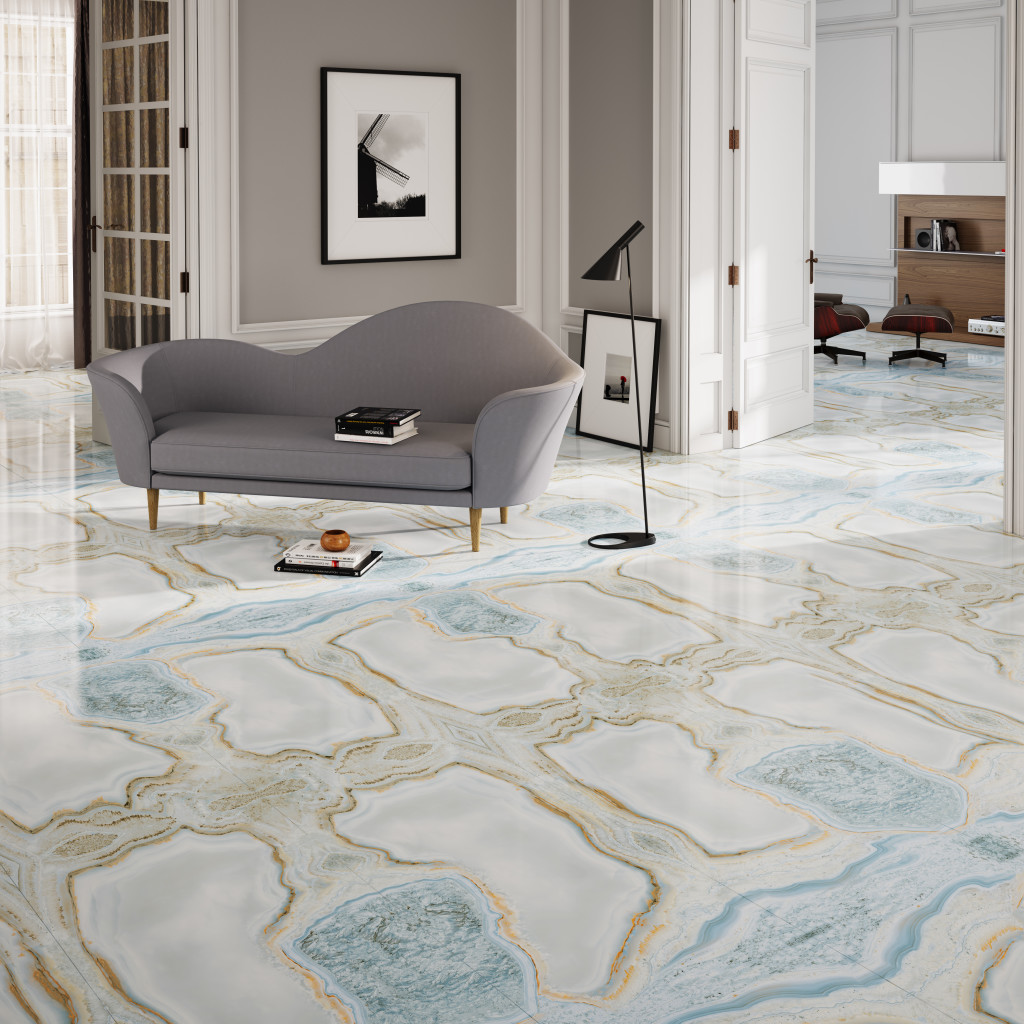 AK: What benefits are there to “rectified” tile?Ryan: Rectification is the cutting grinding of all 4 sides of the fired tile to ensure that all sides are square and the entire surface area is flat. By removing the sides, we get rid of the characteristic “pillow” in a ceramic which makes for much more realistic stone or wood reproductions. This can allow for a joint as small as 1/16"! However remember to ask if a tile is mono-calibre before specifying that small of a joint.
AK: What benefits are there to “rectified” tile?Ryan: Rectification is the cutting grinding of all 4 sides of the fired tile to ensure that all sides are square and the entire surface area is flat. By removing the sides, we get rid of the characteristic “pillow” in a ceramic which makes for much more realistic stone or wood reproductions. This can allow for a joint as small as 1/16"! However remember to ask if a tile is mono-calibre before specifying that small of a joint.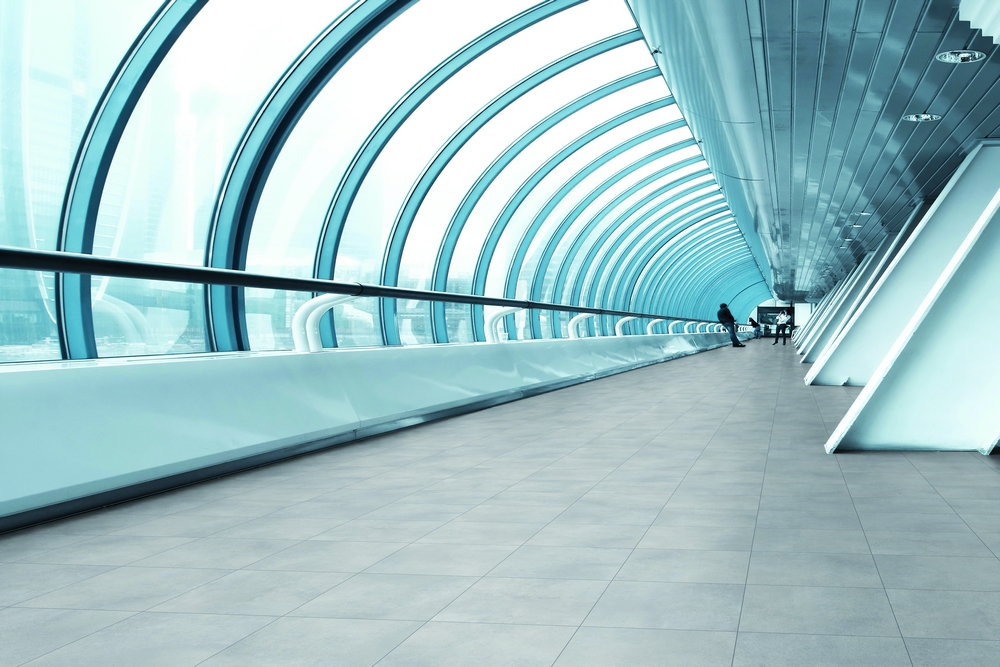 Wow! Just think how knowledgeable you are going to be next time you go tile shopping! Thanks again to Ryan for taking the time to answer my probing tile questions.Continue the conversation on FaceBook. Is there something more you'd like to know about tile or a fact that you'd like to share?
Wow! Just think how knowledgeable you are going to be next time you go tile shopping! Thanks again to Ryan for taking the time to answer my probing tile questions.Continue the conversation on FaceBook. Is there something more you'd like to know about tile or a fact that you'd like to share?
Tile Tuesday: Beauty & Knowledge
Welcome the the third installment of Tile Tuesday. If you missed the last two you can catch them here and here.The second half of my adventure with Tile of Spain took us to Valencia, the location of Cevisama, annual trade show held to showcase the latest innovations introduced by the Spanish tile industry.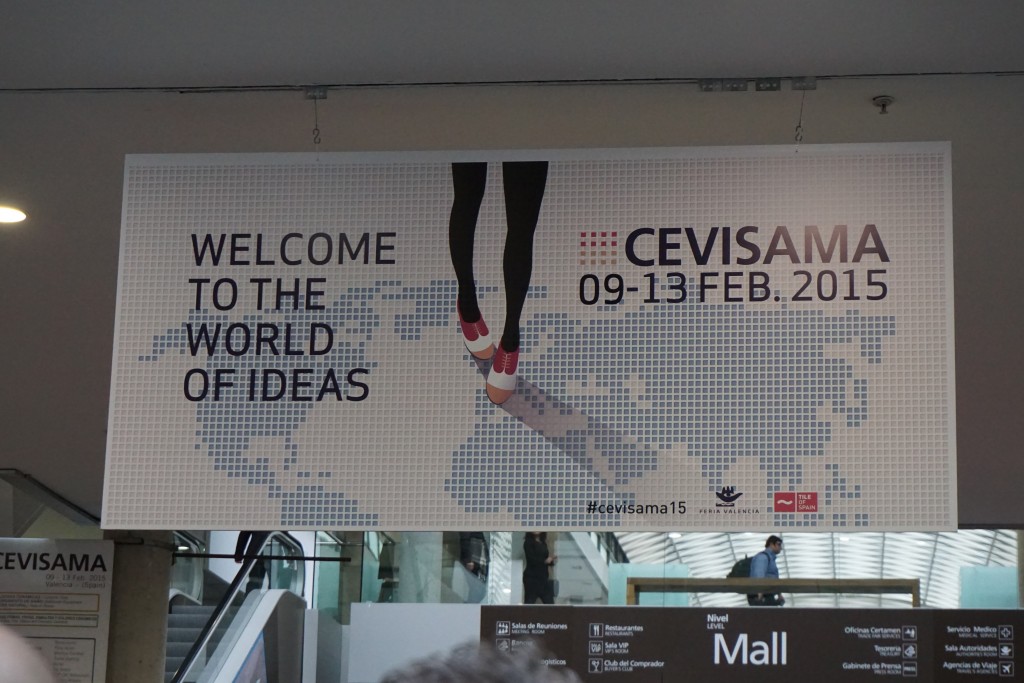 Attending Cevisama was an introduction to a whole world of possibilities! If you’ve been following Tile Tuesday, you already know that ceramic tile is a part of the Spanish culture dating back to Roman and Moorish times. Tile is nothing new but the uses and innovations in the ceramic industry certainly are! In the coming weeks we’ll talk about some of the big trends I saw that you can incorporate into your own kitchen.
Attending Cevisama was an introduction to a whole world of possibilities! If you’ve been following Tile Tuesday, you already know that ceramic tile is a part of the Spanish culture dating back to Roman and Moorish times. Tile is nothing new but the uses and innovations in the ceramic industry certainly are! In the coming weeks we’ll talk about some of the big trends I saw that you can incorporate into your own kitchen.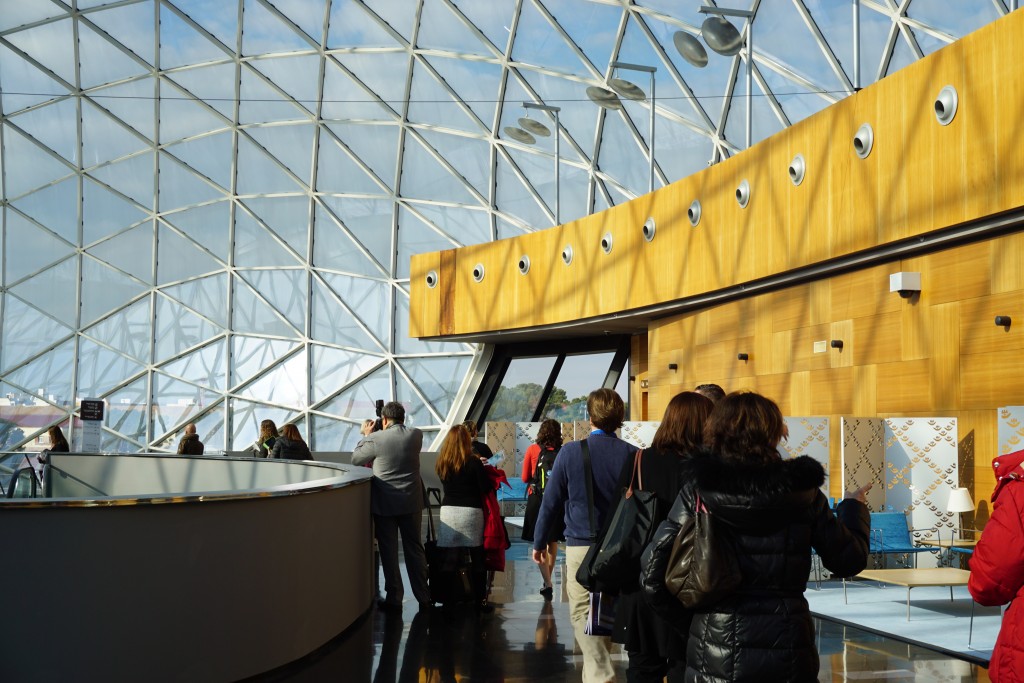 Before we do that let’s cover some good to know, sometimes misunderstood, facts about tile. For your viewing pleasure I have inserted a little eye candy to keep you on your toes!WHAT IS IT?Ceramic tile is a perfect balance of the classical elements of earth (clay), air, water and fire. All are involved in its creation. All tile is made of either red or white clay.
Before we do that let’s cover some good to know, sometimes misunderstood, facts about tile. For your viewing pleasure I have inserted a little eye candy to keep you on your toes!WHAT IS IT?Ceramic tile is a perfect balance of the classical elements of earth (clay), air, water and fire. All are involved in its creation. All tile is made of either red or white clay.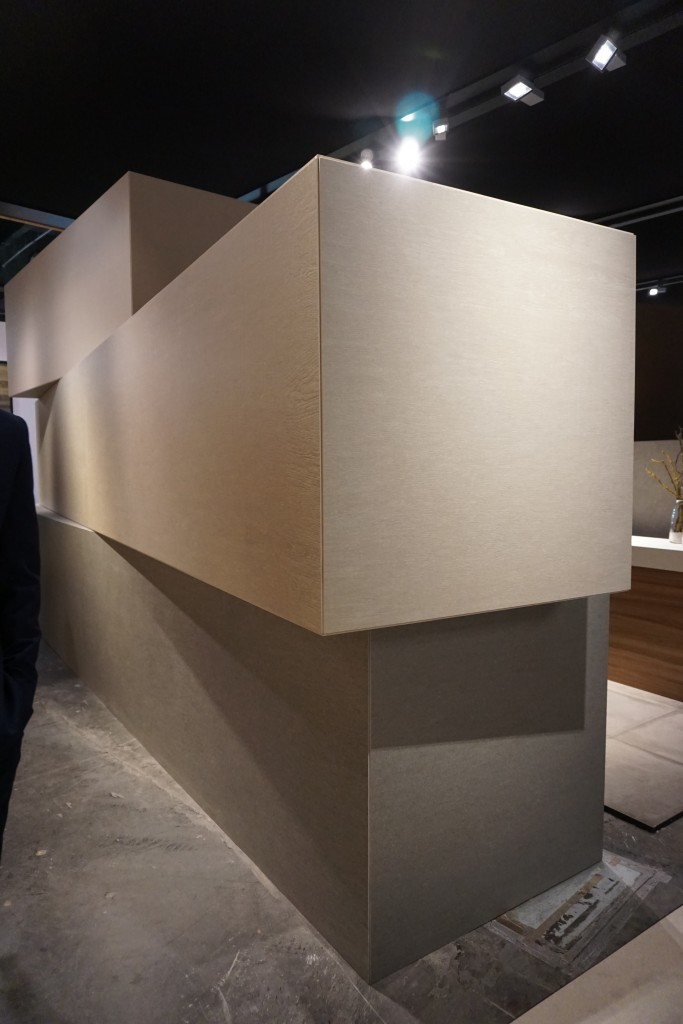 CERAMIC, PORCELAIN OR BOTH?One big question I get regards porcelain vs. ceramic. Guess what? Porcelain tiles ARE ceramic tiles. There is only one technical difference. A tile must have a water absorbtion rate of .05 to be classified as porcelain.
CERAMIC, PORCELAIN OR BOTH?One big question I get regards porcelain vs. ceramic. Guess what? Porcelain tiles ARE ceramic tiles. There is only one technical difference. A tile must have a water absorbtion rate of .05 to be classified as porcelain. 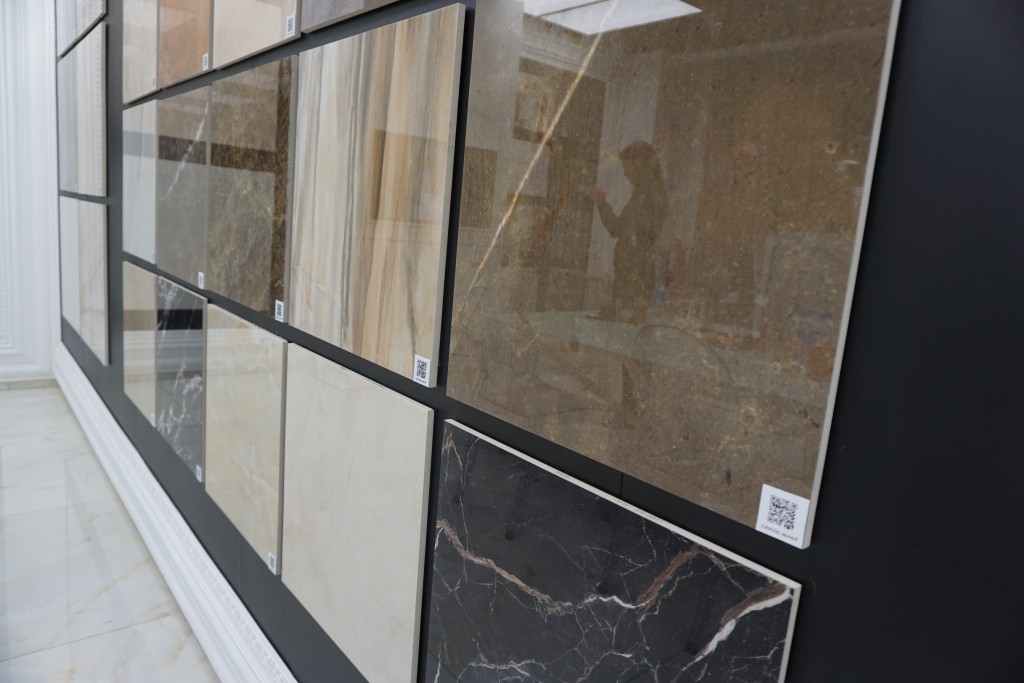 Typically porcelain tiles are denser, less porous and as a result more durable than other ceramics. You can also get them “rectified” which means crisp sharp perfectly squared edges that mean a tight fit with minimal grout lines.IS PORCELAIN THE SAME COLOR ALL THE WAY THROUGH?In the past I believed that a porcelain tile was the same color all the way through so that a small chip would be no big deal but I learned that is not always true. You CAN get something called “through-body porcelain” which means that if the tile is not glazed, the color and texture are consistent all the way through the tile. However porcelain tiles can also have surface glazes and textures that are not “through-body”.
Typically porcelain tiles are denser, less porous and as a result more durable than other ceramics. You can also get them “rectified” which means crisp sharp perfectly squared edges that mean a tight fit with minimal grout lines.IS PORCELAIN THE SAME COLOR ALL THE WAY THROUGH?In the past I believed that a porcelain tile was the same color all the way through so that a small chip would be no big deal but I learned that is not always true. You CAN get something called “through-body porcelain” which means that if the tile is not glazed, the color and texture are consistent all the way through the tile. However porcelain tiles can also have surface glazes and textures that are not “through-body”.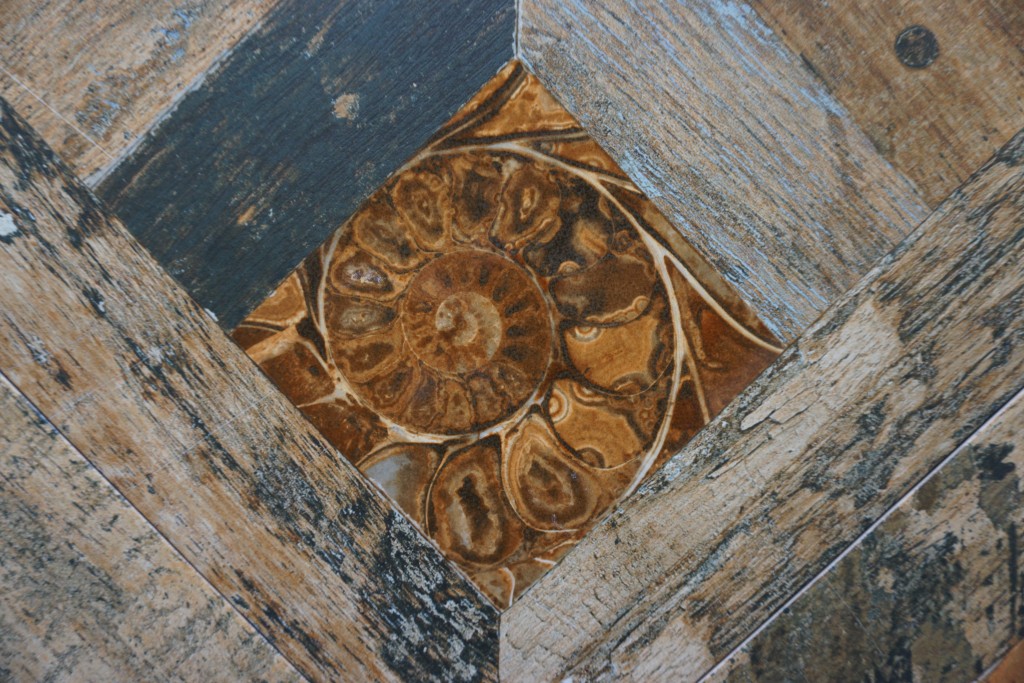 WHERE DOES IT GO?Tiles used for exterior applications are porcelain but not all porcelain tiles are recommended to be used outside. Generally you can put just about any type of tile on the wall but you’re much better off with porcelain on the floor for durability. Remember, although beautiful, glossy finishes are always more slippery than honed, or matte finishes. Got it? Good. Since you made it all the way to the end, I have a special treat for you.
WHERE DOES IT GO?Tiles used for exterior applications are porcelain but not all porcelain tiles are recommended to be used outside. Generally you can put just about any type of tile on the wall but you’re much better off with porcelain on the floor for durability. Remember, although beautiful, glossy finishes are always more slippery than honed, or matte finishes. Got it? Good. Since you made it all the way to the end, I have a special treat for you.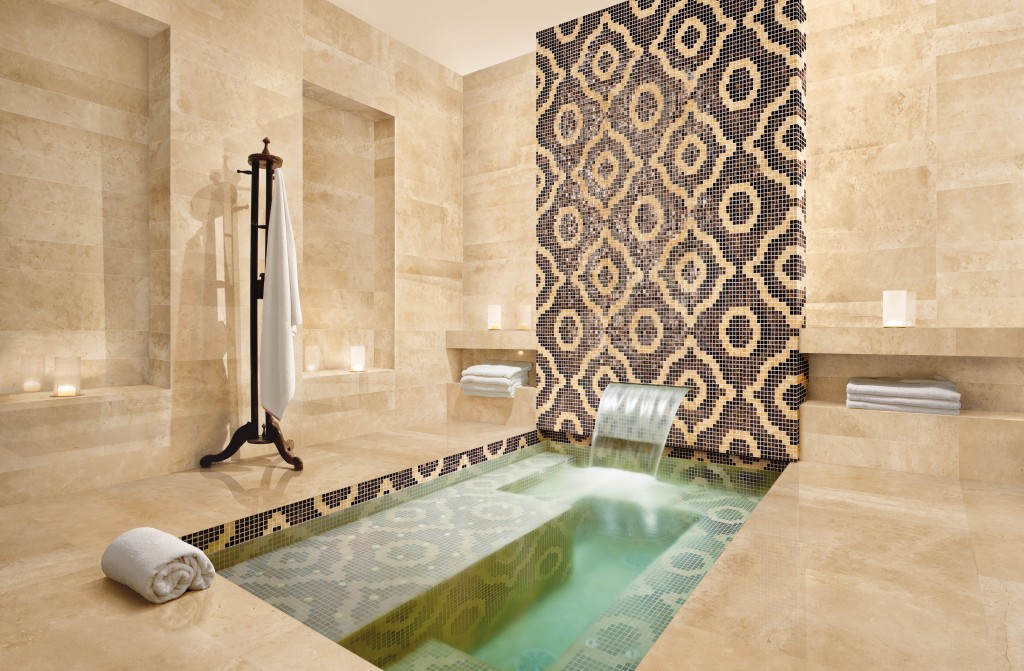 Next Tile Tuesday: Uncovering Valencia with Tile of Spain, perhaps another video slideshow??
Next Tile Tuesday: Uncovering Valencia with Tile of Spain, perhaps another video slideshow??
Spanish Style 2015
As you are reading this I'm probably winging my way across the Atlantic, heading to the Passport to Creativity 2015 event courtesy of Tile of Spain. We will be exploring Seville and then on to Valencia to attend Cevisama, Spain's international tile trade fair showcasing the latest in tile products and design trends. Follow me on FaceBook, Instagram and Twitter for live reports and I'll be recapping all right here upon my return. For now, here's a sneak preview of some of what we'll be seeing (just to get you in the mood).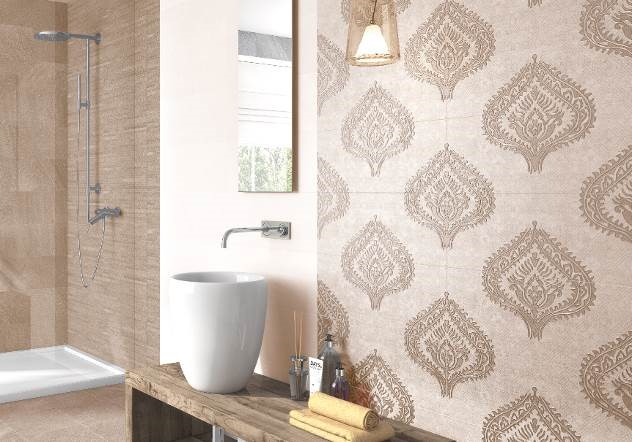
Color palettes include monochromatic color schemes where one hue is carried throughout with subtle changes in texture and pattern. This is a great way to tie a room together creating a harmonious whole. Looks like "greige" strikes again here!
But if you're not so subtle there are lots of bright color choices too! I'm loving the originality, not to mention the forgiving nature of this new porcelain tile! Organically inspired tile is taking a cue from nature for a very authentic wood look. In addition, there are lots of choices for mosaics. The point is all the elements are there for you to make a unique and very personal statement with tile.
Click here for more info about Tile of Spain and where you can get the latest tile.

